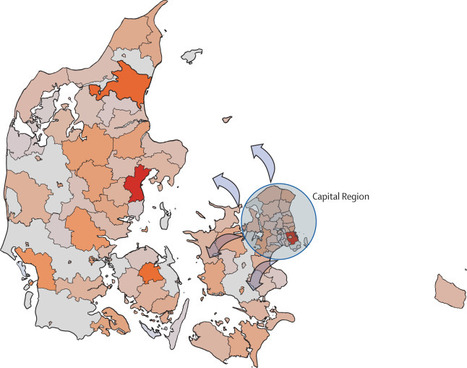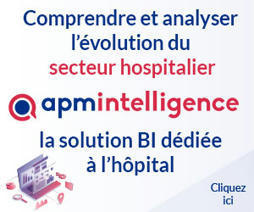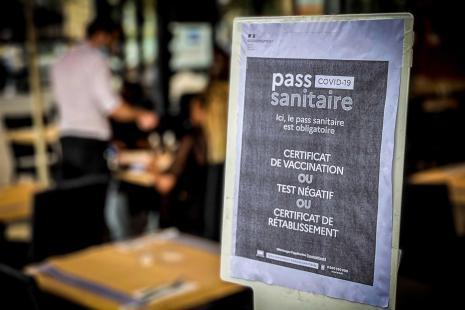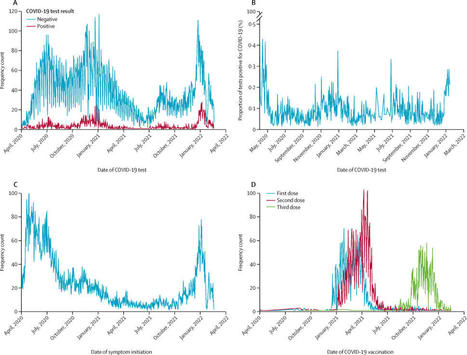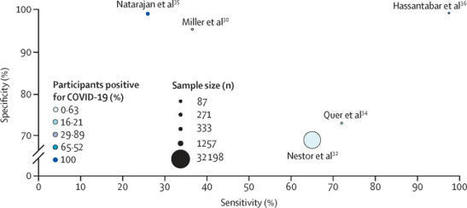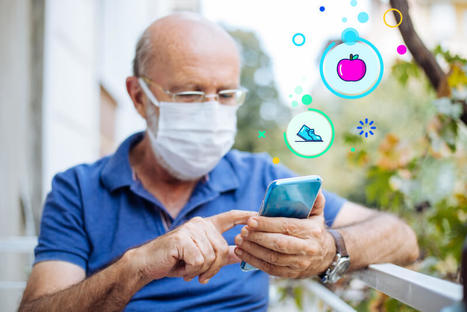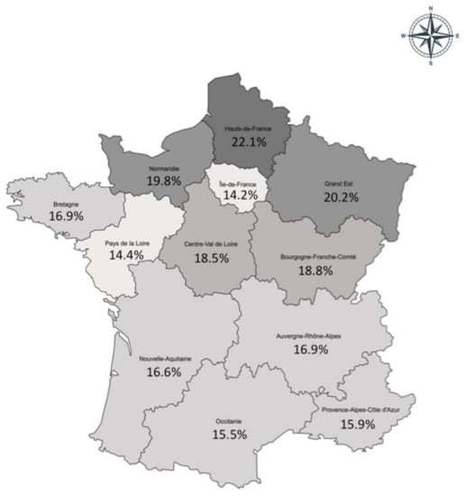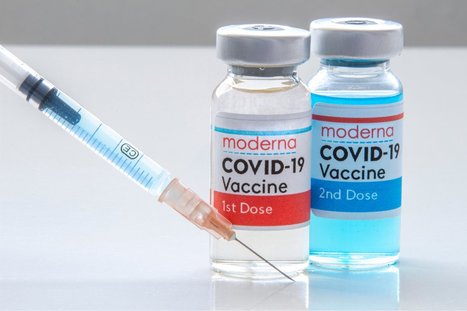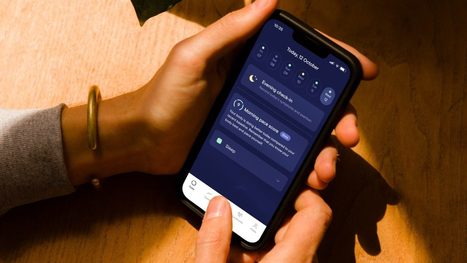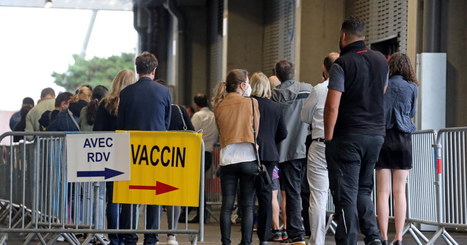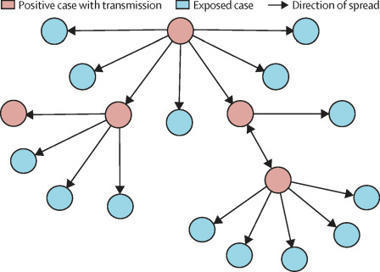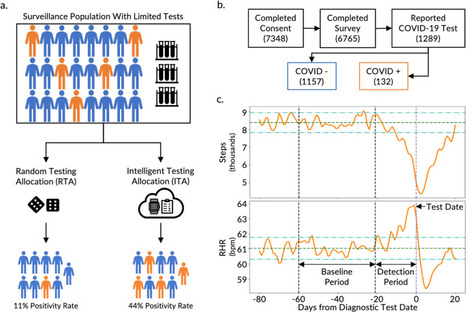 Your new post is loading...
 Your new post is loading...
Electronically delivered letters highlighting potential cardiovascular benefits of
influenza vaccination or sent again as a reminder significantly increased vaccination
uptake across Denmark. Although the magnitude of effectiveness was modest, the low-touch,
inexpensive, and highly scalable nature of these electronic letters might be informative
for future public health campaigns. Lire l'article complet sur : www.thelancet.com
Le 14 février 2023, Nature publie un article annonçant la décision de l’OMS d’arrêter l’enquête sur l’origine du virus SARS-CoV-2. Nous revenons sur l'argumentation de l'OMS, qui affirme poursuivre activement cette recherche. Lire l'article complet sur : www.sciencesetavenir.fr
Depuis le 1er janvier 2023 et avec la fin de l’état d’urgence sanitaire, Emergen évolue et adapte sa surveillance pour l’identification des variants émergents sur le territoire. Notre expert, Bruno Coignard Lire l'article complet sur : www.santepubliquefrance.fr
Premier site français d'information en continu sur les technologies de l'information et de la communication (TIC, NTIC) dans la santé - TICsante Lire l'article complet sur : www.ticsante.com
Le traçage des cas contacts exposés au Covid-19 pourrait avoir coûté plus de 600 millions d'euros depuis le début de l'épidémie, indique la Cour des comptes dans un rapport publié mardi, concluant à « l'efficacité incertaine » du dispositif. Lire l'article complet sur : www.lequotidiendumedecin.fr
Every click you make online counts. It is ridiculously easy to fall down a rabbit hole on any subject. You could accidentally go for hours scrolling through content from cat videos to updates on vaccines. While these may just be displays of innocent scrolling, we could just as easily be feeding our minds with dangerous content difficult to remove from our brains later on. Lire l'article complet sur : dailycampus.com
Minority populations disproportionately suffer from the effects of COVID-19, as evidenced
by nearly three times the infection rate and one to two times the death rate among
Black, Indigenous, and Latino people compared with White people.1 Although some assume
that these disparities are rooted in genetic differences between racial or ethnic
groups, they are more likely a result of structural inequalities. Minority groups
tend to live in densely populated areas, have limited access to health care, and have
higher rates of comorbidities, among other factors, that put them at greater risk
for infection. Lire l'article complet sur : www.thelancet.com
Our study showed that passively collected sensor data from consenting participants
can provide real-time disease tracking and forecasting. With a growing population
of wearable technology users, these sensor data could be integrated into viral surveillance
programmes. Lire l'article complet sur : www.thelancet.com
L’efficacité des futures actions et politiques de santé dépendra de la bonne prise en compte des interconnexions entre santés humaine, animale et des écosystèmes. C’est le constat sans appel des membres du Conseil scientifique covid-19, qui publient dans The Lancet une feuille de route pour la mise en pratique de ces approches globales de la santé, appelées « One Health ».
Lire l'article complet sur : www.cirad.fr
Discover the world’s best science and medicine | Nature.com Lire l'article complet sur : www.nature.com
Containing the COVID-19 pandemic requires rapidly identifying infected individuals.
Subtle changes in physiological parameters (such as heart rate, respiratory rate,
and skin temperature), discernible by wearable devices, could act as early digital
biomarkers of infections. Our primary objective was to assess the performance of statistical
and algorithmic models using data from wearable devices to detect deviations compatible
with a SARS-CoV-2 infection. We searched MEDLINE, Embase, Web of Science, the Cochrane
Central Register of Controlled Trials (known as CENTRAL), International Clinical Trials
Registry Platform, and ClinicalTrials.gov on July 27, 2021 for publications, preprints,
and study protocols describing the use of wearable devices to identify a SARS-CoV-2
infection. Lire l'article complet sur : www.thelancet.com
Heroes vs. Villains: How Gamification Helped in the Fight Against COVID-19 Lire l'article complet sur : www.sidekickhealth.com
PARIS (TICpharma) - Auditionnée le 12 octobre par la commission des lois de l'Assemblée nationale, Marie-Laure Denis, présidente de la Commission nationale de l'informatique et des libertés (Cnil), a appelé les pouvoirs publics à mener "une analyse de la complémentarité des dispositifs ayant été mis en œuvre pendant la crise sanitaire", en référence aux divers systèmes d'information (SI) et outils déployés.
Lire l'article complet sur : www.ticpharma.com
|
Obepi-Roche 2020 by the “Ligue Contre l’Obésité” (League Against Obesity) estimated overweight and obesity prevalence in France. The adopted methodology was chosen to be as similar as possible to that of a series of quota-based surveys conducted every three years from 1997 to 2012 (Obepi-Roche studies). The 2020 survey was conducted online from 24th September to 5th October 2020 by the Odoxa polling institute on a sample of metropolitan French subjects aged 18 years or over. Participants (n = 9598) self-measured their height and weight according to detailed instructions. Prevalence estimates were produced for all categories of body mass index. The prevalence of excess weight was 47.3% (17.0% of subjects with obesity), with higher values in the north and east of France. When comparing these 2020 estimates to previous Obepi-Roche estimates in order to visualize trends since 1997, it appeared that overweight fluctuated around 30%, and obesity prevalence increased steadily at a rapid pace. The increase was even steeper in the youngest age groups and for severe and complex obesity. Given the slightly different methodologies between the 1997–2012 studies and the 2020 survey, the worrying trends in obesity prevalence since 1997 must be confirmed, calling for a reedition of the Obepi-Roche series. Lire l'article complet sur : www.mdpi.com
Les laboratoires pharmaceutiques à l'origine des vaccins contre la COVID-19 auraient expressément demandé au réseau social Twitter de réduire au silence les activistes qui appelaient au partage des brevets avec le reste du monde. Lire l'article complet sur : www.clubic.com
Long COVID is an often debilitating illness that occurs in at least 10% of severe acute respiratory syndrome coronavirus 2 (SARS-CoV-2) infections. More than 200 symptoms have been identified with impacts on multiple organ systems. At least 65 million individuals worldwide are estimated to have long COVID, with cases increasing daily. Biomedical research has made substantial progress in identifying various pathophysiological changes and risk factors and in characterizing the illness; further, similarities with other viral-onset illnesses such as myalgic encephalomyelitis/chronic fatigue syndrome and postural orthostatic tachycardia syndrome have laid the groundwork for research in the field. In this Review, we explore the current literature and highlight key findings, the overlap with other conditions, the variable onset of symptoms, long COVID in children and the impact of vaccinations. Although these key findings are critical to understanding long COVID, current diagnostic and treatment options are insufficient, and clinical trials must be prioritized that address leading hypotheses. Additionally, to strengthen long COVID research, future studies must account for biases and SARS-CoV-2 testing issues, build on viral-onset research, be inclusive of marginalized populations and meaningfully engage patients throughout the research process. Long COVID is an often debilitating illness of severe symptoms that can develop during or following COVID-19. In this Review, Davis, McCorkell, Vogel and Topol explore our knowledge of long COVID and highlight key findings, including potential mechanisms, the overlap with other conditions and potential treatments. They also discuss challenges and recommendations for long COVID research and care. Lire l'article complet sur : www.nature.com
Dans un rapport publié mardi 6 décembre, la Cour des comptes pointe du doigt “l’efficacité incertaine” du contact tracing mis en place...-Santé Lire l'article complet sur : www.usine-digitale.fr
Visible is a new activity-tracking platform designed to help those suffering from Long COVID track and manage their symptoms. Lire l'article complet sur : techcrunch.com
Two views on the pigmentation dependence of pulse oximetry. Lire l'article complet sur : www.nature.com
Annoncé en décembre 2020 à grand renfort de superlatifs, le projet Prédict-Est, présenté comme un « outil d’aide à la décision » destiné aux politiques, n’a pas vraiment tenu ses promesses de prédiction de l’évolution de l’épidémie de Covid. Lire l'article complet sur : www.dna.fr
At the onset of the COVID-19 pandemic in early March, 2020, it became apparent that
non-electronic exposure investigations would not meet the demands required by the
mounting number of employees with COVID-19 in the Mount Sinai Health System in New
York City (NY, USA), a multicentre, academic medical institution and hospital system.
New York City was an epicentre early in the pandemic, resulting in a peak of more
than 6000 cases daily and more than 1000 deaths per day.1 Agile exposure investigation
and contact tracing were crucial to containing the spread of COVID-19 among hospital
staff. Lire l'article complet sur : www.thelancet.com
Mass surveillance testing can help control outbreaks of infectious diseases such as COVID-19. However, diagnostic test shortages are prevalent globally and continue to occur in the US with the onset of new COVID-19 variants and emerging diseases like monkeypox, demonstrating an unprecedented need for improving our current methods for mass surveillance testing. By targeting surveillance testing toward individuals who are most likely to be infected and, thus, increasing the testing positivity rate (i.e., percent positive in the surveillance group), fewer tests are needed to capture the same number of positive cases. Here, we developed an Intelligent Testing Allocation (ITA) method by leveraging data from the CovIdentify study (6765 participants) and the MyPHD study (8580 participants), including smartwatch data from 1265 individuals of whom 126 tested positive for COVID-19. Our rigorous model and parameter search uncovered the optimal time periods and aggregate metrics for monitoring continuous digital biomarkers to increase the positivity rate of COVID-19 diagnostic testing. We found that resting heart rate (RHR) features distinguished between COVID-19-positive and -negative cases earlier in the course of the infection than steps features, as early as 10 and 5 days prior to the diagnostic test, respectively. We also found that including steps features increased the area under the receiver operating characteristic curve (AUC-ROC) by 7–11% when compared with RHR features alone, while including RHR features improved the AUC of the ITA model’s precision-recall curve (AUC-PR) by 38–50% when compared with steps features alone. The best AUC-ROC (0.73 ± 0.14 and 0.77 on the cross-validated training set and independent test set, respectively) and AUC-PR (0.55 ± 0.21 and 0.24) were achieved by using data from a single device type (Fitbit) with high-resolution (minute-level) data. Finally, we show that ITA generates up to a 6.5-fold increase in the positivity rate in the cross-validated training set and up to a 4.5-fold increase in the positivity rate in the independent test set, including both symptomatic and asymptomatic (up to 27%) individuals. Our findings suggest that, if deployed on a large scale and without needing self-reported symptoms, the ITA method could improve the allocation of diagnostic testing resources and reduce the burden of test shortages. Lire l'article complet sur : www.nature.com
Our study showed that passively collected sensor data from consenting participants
can provide real-time disease tracking and forecasting. With a growing population
of wearable technology users, these sensor data could be integrated into viral surveillance
programmes. Lire l'article complet sur : www.thelancet.com
This phylogenetic tree represents the clade distribution of global SARS-CoV-2 viral genomes since the beginning of the pandemic. In the center is the reference Wuhan-1 strain, with outside samples now separated by nucleotide divergence. The last few months have led to an explosion of new variants with further mutations in the viral spike resulting in further antibody evasion, and also carrying changes in many other viral proteins. Some recently sequenced viral genomes from samples collected in Southeast Asia (not shown in this figure) display over a hundred nucleotides changes when compared to Wuhan-1. The graph was generated with nextstrain.org Lire l'article complet sur : www.linkedin.com
Via Juan Lama, Dr. Stefan Gruenwald
Researchers in Luxembourg showed for the first time that vocal recordings of COVID-19 affected people could be used to monitor related symptoms of the disease. Lire l'article complet sur : www.researchluxembourg.org
|



 Your new post is loading...
Your new post is loading...

